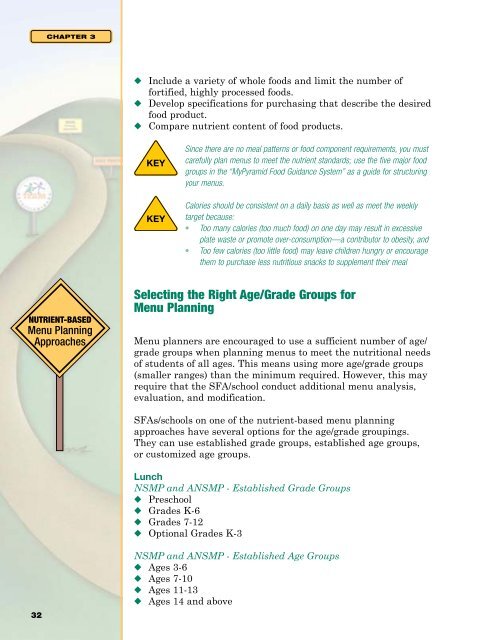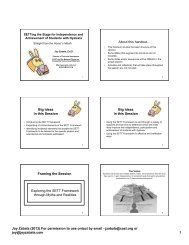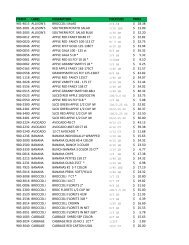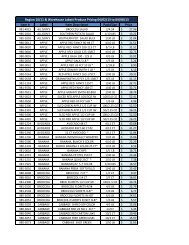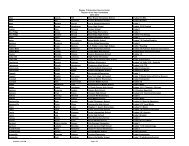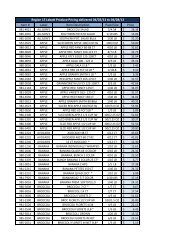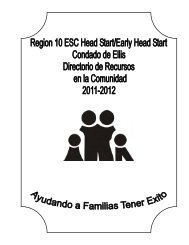Road to SMI Success Manual - Region 10 Education Service Center
Road to SMI Success Manual - Region 10 Education Service Center
Road to SMI Success Manual - Region 10 Education Service Center
You also want an ePaper? Increase the reach of your titles
YUMPU automatically turns print PDFs into web optimized ePapers that Google loves.
Chapter 3<br />
◆<br />
◆<br />
◆<br />
Include a variety of whole foods and limit the number of<br />
fortified, highly processed foods.<br />
Develop specifications for purchasing that describe the desired<br />
food product.<br />
Compare nutrient content of food products.<br />
Since there are no meal patterns or food component requirements, you must<br />
carefully plan menus <strong>to</strong> meet the nutrient standards; use the five major food<br />
groups in the “MyPyramid Food Guidance System” as a guide for structuring<br />
your menus.<br />
Calories should be consistent on a daily basis as well as meet the weekly<br />
target because:<br />
• Too many calories (<strong>to</strong>o much food) on one day may result in excessive<br />
plate waste or promote over-consumption—a contribu<strong>to</strong>r <strong>to</strong> obesity, and<br />
• Too few calories (<strong>to</strong>o little food) may leave children hungry or encourage<br />
them <strong>to</strong> purchase less nutritious snacks <strong>to</strong> supplement their meal<br />
Nutrient-Based<br />
Menu Planning<br />
Approaches<br />
Selecting the Right Age/Grade Groups for<br />
Menu Planning<br />
Menu planners are encouraged <strong>to</strong> use a sufficient number of age/<br />
grade groups when planning menus <strong>to</strong> meet the nutritional needs<br />
of students of all ages. This means using more age/grade groups<br />
(smaller ranges) than the minimum required. However, this may<br />
require that the SFA/school conduct additional menu analysis,<br />
evaluation, and modification.<br />
SFAs/schools on one of the nutrient-based menu planning<br />
approaches have several options for the age/grade groupings.<br />
They can use established grade groups, established age groups,<br />
or cus<strong>to</strong>mized age groups.<br />
Lunch<br />
NSMP and ANSMP - Established Grade Groups<br />
◆ Preschool<br />
◆ Grades K-6<br />
◆ Grades 7-12<br />
◆ Optional Grades K-3<br />
32 32<br />
NSMP and ANSMP - Established Age Groups<br />
◆ Ages 3-6<br />
◆ Ages 7-<strong>10</strong><br />
◆ Ages 11-13<br />
◆ Ages 14 and above


